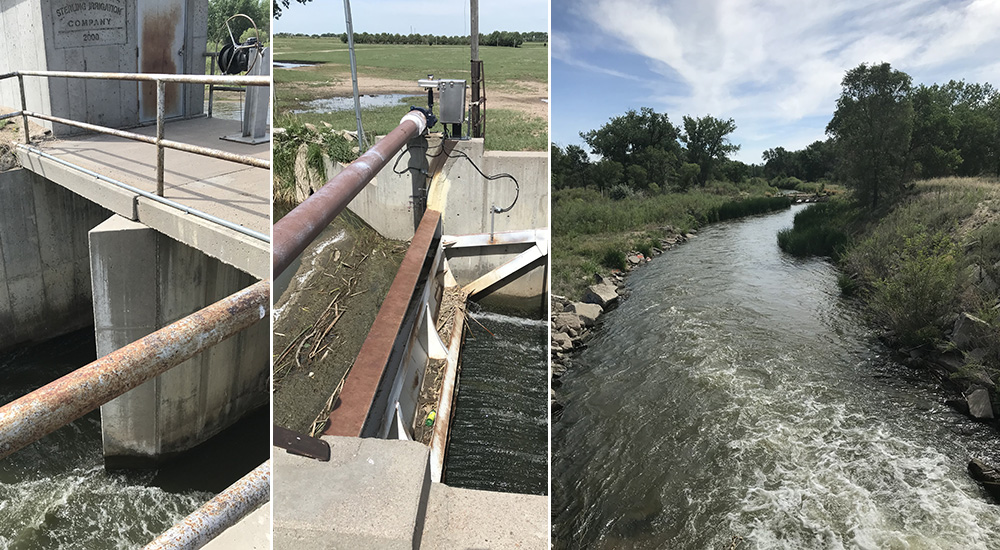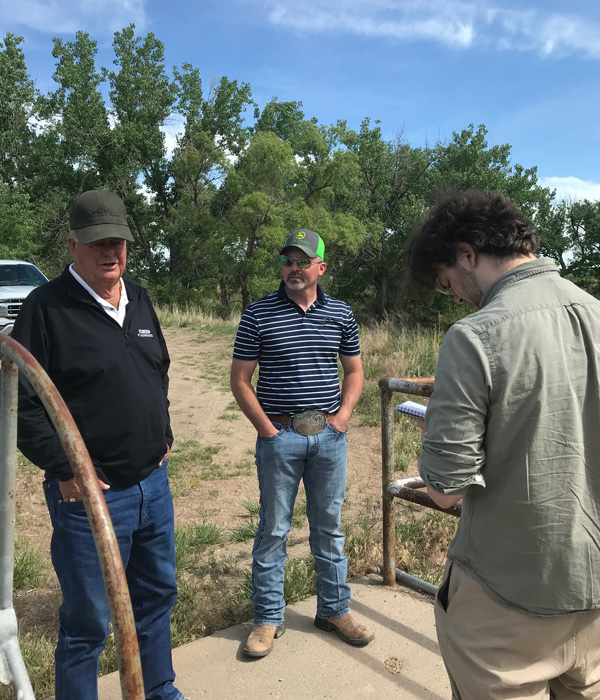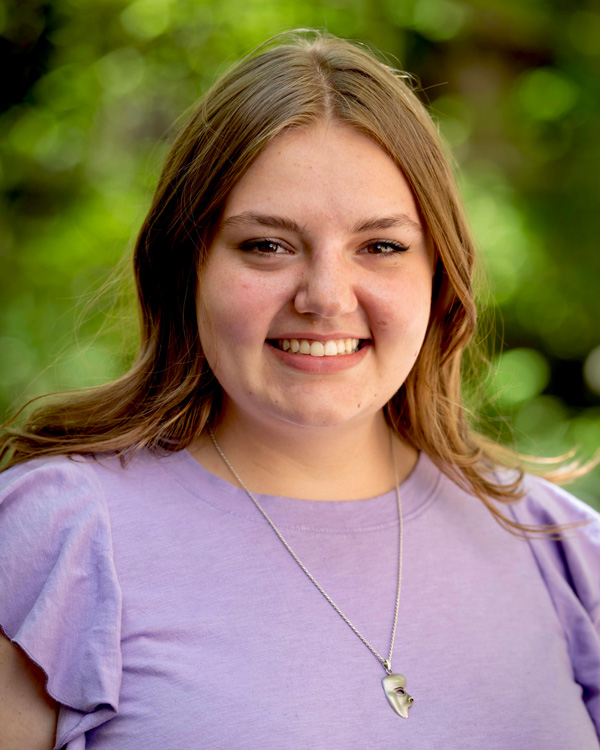Part of a special series highlighting College of Liberal Arts students and their summer internships with CSU Extension

Thoughts about archives and historical research tend to dwell in areas of westward expansion or around the photographs, letters, and telegrams harvested from wartime, and not as readily on agriculture and its history. Yet to History undergraduates Tobin Gold and Aubree Vecellio, their summer internships with CSU Extension centered on agricultural archiving, particularly on water and farming in the Centennial State.
The Sterling Irrigation Company has been a main irrigation resource for farmers in Logan County for 150 years. A cooperative company, Sterling Irrigation has faced a changing agricultural landscape, largely due to a growing Colorado population and the squeezing down of family-owned farms. Yet the agriculturally focused company has maintained its commitment to the Sterling community largely because the company is made up of community members.
“The ways that they run themselves and really foster community interaction and cooperation are still very rooted in carving out an area of the frontier and making sure that everybody has what they need to not just survive, but also to prosper and to make farming profitable,” Gold says.
Gold, a senior History major saw the internship opportunity with CSU Extension (titled “A Mutual Irrigation Company at 150: Developing A History of the Sterling Irrigation Company”) to expand his skills as a researcher in public history by constructing a historical narrative of Sterling Irrigation from local archives.
“I’m taking a lens to this in a way that’s descriptive, but also bringing in documents that are all over the state and would not be accessible otherwise,” Gold says. “It’s been an opportunity to try to construct something for them in a celebratory manner for their 150-year anniversary that is really a testament to what the past 150 years have been for.”

Most of Gold’s chosen area of study and research focus is on gender and sexuality, but his desire to expand his growth as a historian came from one of the department’s professors, Ann Little, who encouraged Gold to be watchful of any opportunity to help him strengthen and practice his skills as a historian. With little background in agricultural history research, Gold would be stretching his skill sets in an area entirely new to him, yet he still felt prepared to grow and succeed.
“There is such an emphasis here in the department on primary source research, and so that has really allowed me to go into the archives, prepare for what I’m about to walk into, and be prepared to construct a narrative [for the company].”

For Aubree Vecellio, her path into a CSU Extension internship, “Geolocating and Visualizing Historic Images” of the Colorado River Compact, was a next step toward her career aspirations to work in archival research and satisfied a lifelong interest in understanding many different historical subjects.
“I remember picking up my first book about the Egyptians and just going off the rails from there. I taught myself different types of things in history, different areas, different people,” Vecellio says. “When it came to choosing a college, I really wanted a history program where I could take different classes and learn different things from teachers who had a lot of experience in that history.”
That desire to understand the many areas of historical perspectives and research is part of the drive Vecellio used to better understand and build the data needed in working in Archives and Special Collections at the Morgan Library for her internship.
The Colorado River Compact of 1922 is an agreement between seven states regulating the use of the Colorado River. Divided into two basins, the Upper Basin being allotted for Colorado, New Mexico, Utah, and Wyoming, and the Lower Basin allotted for Arizona, California, and Nevada, the Compact has become key in understanding each state’s agricultural and environmental legacies.
Through her Extension internships, Vecellio collected all the native data already in the archive (documents, letters, photographs, telegrams, etc.), and then made that information more publicly accessible through a web-based story map. Known as metadata, in archival work metadata is the collection and attribution of information to material in the archive, used both to give context to the material as well as improve the database so that material can be better categorized and found. In Vecellio’s case, that meant analyzing materials from the archive and determining their original or current locations.
“I think the best way to explain it is information about something in the archives. What I’m doing is, they [Archive and Special Collections] have pictures from different collections…I would go and find where that location is [in relation to the Colorado River] and I would put in that longitude and latitude,” she says.
The precision needed in pinpointing the locations, both in the archive and the coordinate information of these materials can be tedious, but it’s something Vecellio takes in stride as part of the essential work of getting this history right when it comes to accurately placing locations on the river from archived materials. “It’s a lot of observing…some of those pictures are very detailed about where they are,” Vecellio says. “We have to learn where ‘this area’ is and where the future of this document is being placed [in the archive] because we want to be as precise as possible, making sure that we’re not messing up locations.”
Aubree sees the value in the archival work, and the work of CSU Extension, as essential to the rural communities across the state in recording local history as it relates to agriculture. “You have to know the history of the land, who gets there, how their farming skill developed over the years, the history of farming, and the evolution,” Vecellio says. “I think knowing that history is important, to make sure that [the work] you’re doing in Extension is going to have an impact on the future and that [the work] you’re doing now is important.”
For Gold, the focus on local agricultural history is essential not just to those within those communities, but also to understanding how history informs the decisions of farmers and community stakeholders in rural areas. “What they’re [Sterling Irrigation Company] doing relies on historical trends, it relies on historical mistrust or historical events. So having knowledge of that is so important to everyone. I think it’s a great opportunity for Extension to do work that otherwise may not be done for communities.”
Internships: The Practical and Applied Side of the Liberal Arts
The CSU Summer Extension Internship program gives students the opportunity to take their research and expertise into the field to help communities across Colorado in the areas of Natural Resources and Sustainability, Food and Agriculture, Youth Development, Economic and Community Development, Health and Well-Being, and Emergency Planning and Resources.
In summer 2022, the College of Liberal Arts had 18 students participate in an Extension internship.